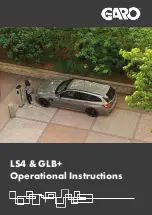
Chapter 2 - Planning and Preparation
FEDERAL
CERTIFICATION
LABEL
WEIGHTS
Check 12 Volt circuit breakers and inspect all fuses.
Operate all 12 Volt lights and accessories.
Install new batteries in battery operated devices.
Test LP gas, smoke and carbon monoxide detectors. Replace the batteries if
necessary.
Check the monitor panel operation.
Open and operate all vents and vent fans. Remove any outside coverings if
applicable.
Inspect 120 Volt electrical system which includes power cord, converter, all
outlets and exposed wiring. If defects are found, consult your servicing dealer or
an authorized service center.
Operate 120 Volt appliances and air conditioner(s). Be sure to uncover air
conditioner shroud(s).
Inspect the LP gas system and check for leaks. If LP tank shows signs of rust or
corrosion, have it inspected by a qualifi ed LP technician. Refi ll if necessary.
Operate each LP gas appliance. Observe all burner/pilot fl ames for proper color
and size.
If necessary, have LP gas regulator adjusted for proper pressure by a quali-
fi ed technician.
Check sealants around all roof and body seams and windows. Reseal if nec-
essary.
Lubricate all exterior locks, hinges, and latches.
Wash and wax exterior. Inspect body for scratches or other damage. Touch up
or repair as necessary. Flush underside of the motorhome thoroughly.
Check all the chassis fl uid levels including engine oil, coolant, power steering
fl uid, brake fl uid, transmission, rear axle oil and washer fl uid. Top off if necessary.
Check windshield wiper blades. Replace if necessary.
Check all exterior lights; clearance, brake, turn, and reverse should be fully
functional.
Your motorhome should be ready for a new traveling season. Your dealer can check
your preparation and correct any defects or make any necessary adjust-
ments.
These items are the absolute minimum requirements necessary for pre-travel.
A motorhome chassis (springs, wheels, tires, axles, and frame) is designed to carry
a certain maximum load. This load includes everything; the weight of the empty mo-
torhome itself, occupants, your belongings, fuel, fresh water, waste water and any-
thing else that may be in or attached to the motorhome.
The Federal Certifi cation Label, found in the driver’s area, is installed in the ve-
hicle as required by federal standards. It contains information that will be helpful
in determining proper loading. The label will also list the date of manufacture,
(GCWR), (GVWR), (GAWR) (Front and Rear), tire size, rim size, tire pressure (PSI),
Vehicle Identifi cation Number (VIN), and the type of unit.
Summary of Contents for Astoria 2006
Page 1: ...Owners Manual ...
Page 10: ...Introduction ...
Page 58: ...Chapter 8 Exterior Systems ...
Page 76: ...Chapter 10 Winter Use and Storage ...
Page 82: ...76 Notes ...
Page 83: ...77 Notes ...
Page 84: ...78 Notes ...
Page 85: ...79 Notes ...
Page 86: ...80 Notes ...
Page 97: ...91 Electrical Diagrams ...
Page 98: ...92 Electrical Diagrams ...
Page 99: ...93 ...
Page 100: ...94 Electrical Diagrams ...
Page 101: ...95 Electrical Diagrams ...
Page 102: ...96 Electrical Diagrams ...
Page 103: ...97 Electrical Diagrams ...
Page 104: ...98 Electrical Diagrams ...
Page 105: ...99 Electrical Diagrams ...
Page 106: ...100 Electrical Diagrams ...
Page 107: ...101 Electrical Diagrams ...
Page 108: ...102 Electrical Diagrams ...
Page 109: ...103 Electrical Diagrams ...
Page 110: ...104 Electrical Diagrams ...
















































